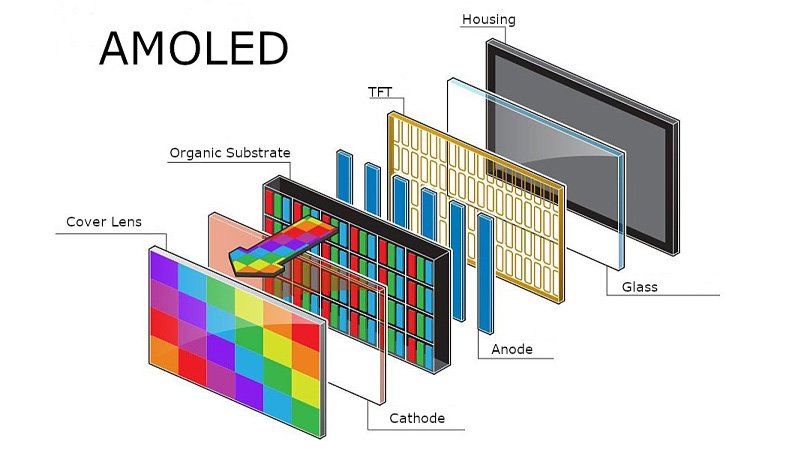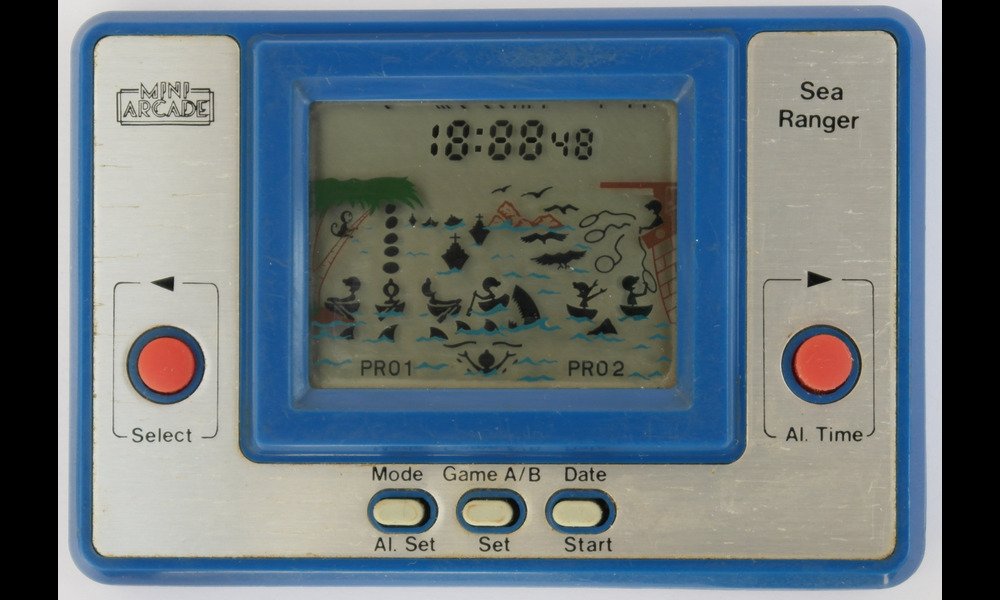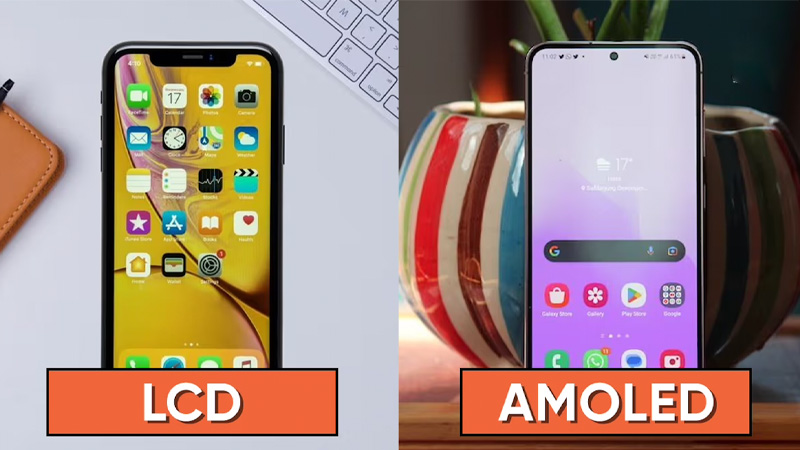Most display technology producers capitalize on small but unique advantages to gain an edge against competitors. None is this truer than in employing display screens.
From smartphones to monitors, they use advanced technology to optimize the viewing experience for consumers or take advantage of lesser production costs to make their products attractive to people.
This essay will discuss two main display screens for smartphones and some monitors, the AMOLED and the LCD, and why choosing display technologies that have either makes sense for most consumers.
1. What is AMOLED and LCD?
AMOLED stands for Active-Matrix Organic Light Emitting Diodes. It belongs to the LED display technology family, and this one utilizes organic material to help produce light.
The advanced technology of AMOLED allows it to be energy-efficient and lightweight. Compared to other display screens, AMOLED can give a rich texture to images and videos. No wonder pioneers of cellphone and smartphone technologies and leaders in television and display technology manufacturing prefer AMOLED.
LCD stands for Liquid Crystals Display. It uses liquid crystal molecules to induce light and imaging by running an electric current on those molecules. The concept has been around for more than a century, but only in the seventies did researchers achieve the technological breakthrough, unlocking limitless possibilities.
LCD has a wide range of applications. From display technologies of all types, like cellphone screens and televisions, to cameras and electronic gadgets and devices, like watches and calculators, it revolutionized the way images can be displayed on a particular screen.
Today, many smartphones and monitors use LCD technology because it can enhance the aesthetic appeal of display content through texture and color. That leads to a more enhanced viewing pleasure and more immersive experience for the consumers.

2. Comparing AMOLED and LCD: Advantages and Disadvantages
With their pioneering, cutting-edge technology, AMOLED and LCD are at the forefront of the display screen revolution. With the ever-increasing need for display technologies for purposes of entertainment, gaming, advertisement, photography, medicine, surveillance, and others, both have become more relevant with the passing of time.
AMOLED and LCD entail many advantages for manufacturers who want to gain a competitive edge. Consumers who want to make the most of the experience provided by their display technology, equipment, or gadget may consider whether to go for something with an AMOLED or LED display screen. But they also have drawbacks.
Advantages of AMOLED
High Refresh Rates: Refresh rate is the number of images shown on a display screen per second. The higher the number, the higher the refresh rate, and the smoother the motion on the screen.
High refresh rates are best for gaming and viewing. Gaming is so popular nowadays, and games of all types flood the market and are available in all gadgets, consoles, and smartphones. Having a high refresh rate is a great plus. AMOLED, expectedly, is the display screen of choice by most manufacturers, especially leading ones.
Energy-Efficient: The whole LED display screen family prides itself on being energy efficient. By energy efficient, we mean they make the most of the power they consume, ensuring nothing goes to waste. They optimize the energy to give you the best experience possible, whether viewing, gaming, or whatever the use or application of LED.
It consumes less power than others. Using an LED display screen can save money and electricity. However, with AMOLED, which uses organic materials to produce light and show images, the efficiency and cost savings become greater.
AMOLED is a significant improvement from previous incarnations of LED display screens, and among the tremendous benefits it can give is further energy efficiency. AMOLED has become so famous that some brands marketed energy efficiency and used it as a selling point to sell more products.
Thin: Most manufacturers want AMOLED for their products because it is thin. This makes for a lighter gadget, which is preferred by most consumers. The lightweight design can contribute to the overall aesthetic effect of most gadgets.
Wide Range of Applications: The advantages mentioned make AMOLED ideal not only for entertainment display technologies but also for other industries. From scientific research and medicine to home appliances and other types of equipment using interfaces, AMOLED is among those that set the standard.
Disadvantages of AMOLED
Cost: The materials and production costs of AMOLED are higher than those of LCD. That makes products and other applications using AMOLED more expensive than their LCD counterparts.
Less Brightness: AMOLED has less brightness than LCD, which can impact the use of a particular gadget. It does not have the backlights that LCD employs. If you are always outdoors, there might be issues concerning the viewing experience when using a particular display technology with AMOLED.

Advantages of LCD
Excellent Brightness: This aspect makes LCDs ideal display screens for most technologies, especially those for entertainment and gaming purposes. It makes videos and images more vibrant and richer in texture, giving an enhanced aesthetic pleasure for most consumers.
The brightness results from employing backlights, which are an integral component of LCDs in creating light and producing images. The brightness makes many gadgets employing LCDs ideal for outdoor use.
Inexpensive: The development of LCDs is due to the need by many industries to develop cheaper, affordable technologies for many industries that would have been otherwise expensive.
It is no wonder that it was a game changer when applied to television: It gives a more immersive experience for something that, though of a specific price, can offer something of value at a lesser cost.
In general, most gadgets, smartphones, and other display technologies employ LCD screens at a lower cost than those using AMOLED. That makes them affordable and contributes to their popularity among many manufacturers and consumers.
Disadvantages of LCD
Issues in Energy Efficiency: The backlight and the technology employed require LCDs to consume more energy than AMOLED. As such, they consume more electricity, making them more costly. This is an issue for most LCD televisions; many consumers complain of high electricity costs, at least compared to other display technologies available.
The issue of energy efficiency is not only because LCDs consumes more power. Again, due to the backlights and technology employed, LCDs drain the battery easily. Thus, those who use smartphones with LCDs need to manage their gadgets properly or use power banks and charge their phones frequently to sustain power.
Visibly Thicker: An LCD screen is thicker than an AMOLED. Thus, smartphones and display technologies sporting them will be heavier than others. Thickness may impact consumers’ desires.
In recent years, most consumers have preferred smartphones and gadgets that are lighter but durable. They are easier to hold and grasp and more convenient to bring anywhere, but they come at a price. Smartphones and gadgets employing LCD, therefore, have lost their appeal to some who want a handy gadget.

3. Which One Suits You Best?
AMOLED and LCD screens have strengths that appeal to different consumers. The appeal is mainly due to the strengths outweighing the drawbacks.
If you want your display screen to be energy-efficient, you could be AMOLED’s ideal consumer. You may want it mainly because you use your gadget always and need one that is easy to grasp and handle, something you can bring anywhere without much hassle.
If you play games and want a monitor with higher refresh rates, AMOLED is also for you. Playing for long hours may not matter because it saves energy and electricity.
If you can manually make your gadgets or smartphones energy efficient through actual intervention and are not always into using them except when you want entertainment now and then, having LCD display screens will make sense. They may not be economical, but less use means less energy consumption.
Smartphones and display technologies with LCDs are mostly affordable. With the diversification of LCDs into TN and IPS and so many manufacturers employing LCDs, the prices can go lower, depending on the brand.
Buying display technologies with LCDs might be worth it if you are on a tight budget. It can lead to a more immersive experience without having to spend much. No wonder many PC monitors still employ LCDs as display screens. It can give you the best of both worlds.
But whether you choose AMOLED or LCD, LEDSINO has the best of everything. We can help you decide which is better and avail of display technology that will perfectly suit your taste and needs.

4. Final Thoughts
AMOLED and LCD dominate the display screen market, and many manufacturers choose either one because of its advantages. They have their strengths and drawbacks, but the choice lies in the nature of the captive market, which has its own preferences when it comes to display technologies.
Most consumers find them desirable because their strengths outweigh their drawbacks. The tremendous benefits make most consumers overlook those weaknesses and make choices based on which can give a more enjoyable viewing experience.



